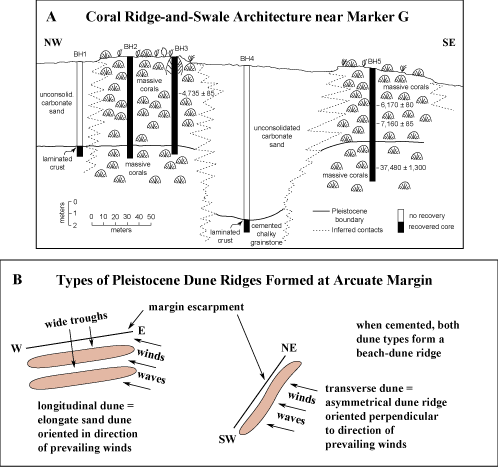FISC - St. Petersburg
Figure 34. (A) Cross section of core transect across two rock ridges inshore from Marker G in the lower Keys (Tile 5, modified from Shinn et al., 1977a). The cores indicate the ridges are coralline, are growing vertically, and are separated by a sediment-filled swale. Dimensions of the ridge-and-swale architecture are in the tens of meters. Note uncorrected radiocarbon ages of recovered corals. The 37,480±1,300 14C date was obtained on a recrystallized coral and was believed to be much too young. Inferred age of the bedrock coral sections is between ~86.2 and 77.8 ka, which is the radiometric-age range for the youngest Pleistocene corals on the shelf (Toscano, 1996; Multer et al., 2002; Lidz et al., 2003). (B) Cemented beach-dune ridges are thought to underlie the coral ridges shelf-wide. Wind-blown sand dunes, now rock ridges, are well known throughout the Caribbean and Bahamas (e.g., Ball, 1967; McKee and Ward, 1983).
|
Can't see the printable PDF version? Get the free Adobe Acrobat® Reader. |
